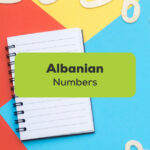One of the essential vocabulary to learn is banking vocabulary. So today, let’s deposit some basic Tagalog bank vocabulary in you.
When you’re in the Philippines, you don’t need to worry about this because most of the things you see inside the bank are written in English. But would it hurt for you to learn some Tagalog bank vocabulary? Today, we will learn some basic Tagalog bank vocabulary that you can use when dealing with bank transactions in the Philippines.
Basic Tagalog Bank Vocabulary
Learning the basic Tagalog bank vocabulary has a lot of advantages. First, it can make your bank transactions in the Philippines smoother. Although the bank staffs and tellers are well-trained in the English language, they are used to dealing with Filipinos. They might use some Filipino slang terms that only Filipinos would understand. This might be an opportunity for you to learn.
It’s also important, especially when you’re planning to do business with a Filipino. It’s easy to negotiate and transact when you know how to speak their language and use some terms that they are really comfortable using.
Lastly, this will also prevent you from falling into different banking scams that are happening not only in the Philippines but around the world.
So, here is some basic Tagalog bank vocabulary. Do not be surprised that there are vocabularies that are still in American English because these words do not have direct Tagalog or Filipino translation.
Bangko (Bank)

The Tagalog word for bank is “bangko”. In the Philippines, there are lots of banks that operate and serve customers. The central bank of the Philippines is called the Bangko Sentral ng Pilipinas. Other huge banks that operate in the Philippines are the following:
- BDO (Banco De Oro Unibank, Inc)
- BPI (Bank of the Philippine Islands)
- Landbank of the Philippines
- Metropolitan Bank & TCO
- Philippine National Bank
- Development Bank of the Philippines
- China Banking Corp
- Union Bank of the Philippines
- Security Bank Corp
Pera (Money)

Of course, we cannot talk about banks without money. The Tagalog word for money is “pera”. This year, there are newly-issued banknotes and coins that are now being used in the Philippines.
As of now, there are seven (7) peso coins:
- 1 centavo
- 5 centavos
- 25 centavos
- 1 peso
- 5 pesos
- 10 pesos
- 20 pesos
For the bills, there are 6 (six):
- 20 pesos
- 50 pesos
- 100 pesos
- 200 pesos
- 500 pesos
- 1000 pesos
Just recently, there were concerns that the new one thousand peso bill should not be folded or else, it won’t be accepted. Take note that the highest peso bill in the Philippines is one thousand pesos or “isang libo” in Tagalog.
Of course, these concerns was addressed by the Bangko Sentral ng Pilipinas. It said that it should still be accepted even if it’s folded. But, many people wouldn’t want to take the risk because it’s a huge amount of money, and they’re afraid that it won’t be used as payment for their bills and others.
Utang (Loan/Debt)

One of the most important words that you should learn when it comes to Tagalog bank vocabulary is the word “utang” or debt/loan. With the state of living in the Philippines, loans are really helpful. It can be used in business, personal matters, education, and all. These loans can be paid for a certain period that suits the customer’s salary.
Nowadays, it’s easy for employed people to get a loan and apply for a credit-secured card. There are also lots of loan services that offer quick loans. Just make sure that once you borrow, you really have the capacity to pay, or else it will result in a bigger problem.
Balanse (Balance)

The next Tagalog bank vocabulary is balance or “balanse” in Tagalog. A bank balance is a bank account’s ending cash amount. The bank balance can also be found at any time by asking the bank what its records say about the amount of cash in an account.
However, it’s different when a person asked “Magkano ang balanse ko sa’yo?” (How much os my balance to you?). This simply means, “How much do I owe you?”
May-ari Ng Account (Account Holder)

Next, let’s go to the basic account details. These are the details that you’ll need when you write in different banking forms, such as deposit and withdrawal slips. So, we will start on the account holder or “may-ari ng account.”
As you can see, it’s a combination of Tagalog language and American English. The Tagalog language does not really have a direct translation of “account holder” in Tagalog. They just simply say “may-ari” or “owner” in English. This is also true for “account number.”
Deposito (Deposit)

The next Tagalog word is “deposito”. You can easily know this word’s meaning because only one letter is added to the English word. Depositing money in the bank in the Philippines can be done in many ways, but the most common ways are through going to the bank and filling up deposit slips or transferring funds via online banking.
Withdraw

Unlike the word “deposit,” “withdraw” doesn’t actually have a Tagalog translation. The literal translation of withdraw in Tagalog is “tanggalin/kuhanin” (verb)/, or “pagtanggal/pagkuha” (noun)/. But, this doesn’t really suit the context of banking, so the word “withdraw” is used. It doesn’t need to be translated anymore.
Bintana Ng Teller (Teller Window)

The next vocabulary that you have to learn is “bintana ng teller” or teller window. This is also a combination of Tagalog and English language because there’s no direct translation of this word in Filipino. Usually, you have to get a numbered ticket or “numero sa pagpila” and line up to get to the teller.
Kaha De Yero (Safe)

By just reading the word, you can tell that it has a Spanish influence. The word “kaha” means “a box or cashbox,” while “yero” means “a galvanized, corrugated metal aluminum sheet.” In Tagalog, kaha de yero means “safe,” where banks put the money for safekeeping.
ATM

Lastly, the ATM which stands for Automated Teller Machine. There is no Tagalog translation of this word. Since it’s already an abbreviation, it’s easier to use and remember, so there’s no need for translation.
Other Bank Vocabulary In The Tagalog Language
Basic Banking Phrases In The Tagalog Language
Have Yourself A Bank Account Of Tagalog Vocabulary
When you learn a new language, you might be overwhelmed by the number of vocabulary that you need to learn. But, it’s not supposed to be that way. You have to know that there is a process to learning these vocabularies while also enhancing your other language skills. Thankfully, Ling App can do that.
Ling App has well-developed features that can help you learn Tagalog quickly. Enjoy the fun learning activities. Improve your pronunciation with the dialogue features and audio recordings from a native speaker. Discover more about Filipino culture by reading blogs.

Learning Tagalog doesn’t have to cost you too much stress and inconvenience. Learn Tagalog with Ling App now!



































































